-
 Bitcoin
Bitcoin $83,313.6693
-1.61% -
 Ethereum
Ethereum $1,824.6416
-3.06% -
 Tether USDt
Tether USDt $0.9999
0.00% -
 XRP
XRP $2.0615
-1.92% -
 BNB
BNB $601.0287
-0.09% -
 Solana
Solana $119.7880
-4.08% -
 USDC
USDC $0.9999
-0.01% -
 Dogecoin
Dogecoin $0.1661
-3.40% -
 Cardano
Cardano $0.6510
-3.65% -
 TRON
TRON $0.2380
-0.22% -
 Toncoin
Toncoin $3.7959
-5.14% -
 UNUS SED LEO
UNUS SED LEO $9.3951
-0.16% -
 Chainlink
Chainlink $13.1588
-4.27% -
 Stellar
Stellar $0.2636
-1.98% -
 Sui
Sui $2.4047
1.82% -
 Avalanche
Avalanche $18.6850
-3.03% -
 Shiba Inu
Shiba Inu $0.0...01235
-0.22% -
 Hedera
Hedera $0.1650
-0.75% -
 Polkadot
Polkadot $4.0373
-1.82% -
 Litecoin
Litecoin $83.5682
0.58% -
 MANTRA
MANTRA $6.4443
3.75% -
 Bitcoin Cash
Bitcoin Cash $303.2630
-0.75% -
 Bitget Token
Bitget Token $4.5497
-1.20% -
 Dai
Dai $1.0000
0.00% -
 Ethena USDe
Ethena USDe $0.9998
-0.01% -
 Pi
Pi $0.6605
-4.81% -
 Hyperliquid
Hyperliquid $12.4411
-6.29% -
 Monero
Monero $216.2784
-1.00% -
 Uniswap
Uniswap $6.0092
-2.13% -
 Aptos
Aptos $5.2761
-0.41%
What is the concept of decentralized autonomous organization DAO?
DAOs operate on blockchains using smart contracts for transparent, automated governance, eliminating central authority and fostering community-driven decision-making.
Mar 31, 2025 at 08:28 pm
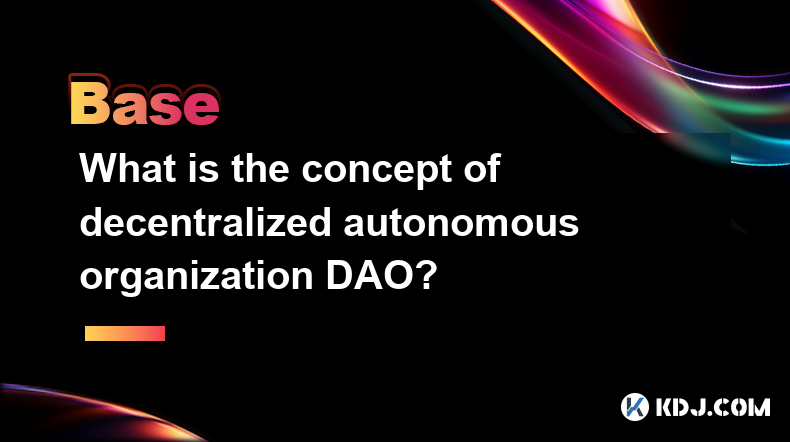
Understanding Decentralized Autonomous Organizations (DAOs)
A Decentralized Autonomous Organization (DAO) is a community-led entity that operates on a blockchain, governed by rules encoded as smart contracts. This eliminates the need for a central authority, instead distributing power among its members. DAOs leverage smart contracts to automate decision-making processes, making them transparent, secure, and efficient. Unlike traditional organizations, DAOs don't have a central leadership structure, fostering a more democratic and participatory environment. Membership is often determined by token ownership, providing voting rights proportional to holdings.
How DAOs Function: The Mechanics of Decentralization
The core functionality of a DAO revolves around its smart contracts. These self-executing contracts define the organization's rules, including membership criteria, voting mechanisms, and treasury management. Smart contracts automate processes, ensuring transparency and preventing manipulation. Members propose and vote on proposals, with outcomes automatically enforced by the smart contract. This automation removes the need for intermediaries, streamlining operations and reducing costs. The decentralized nature minimizes single points of failure, enhancing the organization's resilience.
DAO Governance: Tokenomics and Decision-Making
The governance model of a DAO is crucial to its success. Most DAOs use a token-based system, where token holders have voting rights. The amount of tokens held usually correlates to the voting power. This system incentivizes participation and aligns the interests of members with the DAO's success. Different DAOs employ various voting mechanisms, ranging from simple majority votes to more complex weighted voting systems. The specific governance model is outlined in the DAO's smart contracts, defining the rules and procedures for decision-making.
The Role of Smart Contracts in DAO Operations
Smart contracts are the backbone of any DAO. They are self-executing contracts with the terms of the agreement between buyer and seller being directly written into lines of code. These contracts automatically execute when predetermined conditions are met. In a DAO, smart contracts manage the treasury, handle member onboarding, and enforce voting outcomes. They ensure transparency and immutability, providing a verifiable record of all transactions and decisions. The security and reliability of the smart contracts are paramount to the DAO's functionality and overall success.
Different Types of DAOs and Their Applications
DAOs are not a monolithic entity; they come in various forms, each tailored to specific goals and applications. Some DAOs focus on funding projects through community contributions, while others manage decentralized autonomous organizations. Some DAOs act as investment funds, pooling resources from members to invest in various crypto projects. Others might focus on creating and maintaining open-source software or providing shared services within a specific niche. The diversity of DAOs reflects their adaptability and potential to revolutionize organizational structures.
Building a DAO: A Step-by-Step Guide
Creating a DAO involves several key steps:
- Define the DAO's purpose and goals: Clearly articulate the DAO's mission and objectives.
- Design the governance structure: Determine the voting mechanisms, membership criteria, and decision-making processes.
- Develop the smart contracts: Code the smart contracts that will govern the DAO's operations.
- Deploy the smart contracts to a blockchain: Choose a suitable blockchain network and deploy the contracts.
- Launch the DAO and attract members: Promote the DAO and encourage participation.
Advantages of DAOs
- Transparency: All transactions and decisions are recorded on the blockchain, ensuring complete transparency.
- Security: Smart contracts minimize the risk of fraud and manipulation.
- Efficiency: Automation streamlines processes, reducing costs and improving efficiency.
- Decentralization: Power is distributed among members, preventing single points of failure.
- Community-driven: Decisions are made collectively by the members, fostering a sense of ownership and participation.
Challenges of DAOs
- Complexity: Developing and managing DAOs can be technically challenging.
- Security risks: Smart contract vulnerabilities can be exploited by malicious actors.
- Governance challenges: Establishing effective governance mechanisms can be difficult.
- Scalability: Some DAOs may struggle to scale as they grow in size and complexity.
- Legal uncertainty: The legal status of DAOs is still evolving in many jurisdictions.
Frequently Asked Questions
Q: What is the difference between a DAO and a traditional company?
A: A DAO operates on a blockchain, governed by smart contracts, eliminating the need for a central authority. Traditional companies have a hierarchical structure with centralized control. DAOs are more transparent and democratic.
Q: How can I participate in a DAO?
A: Participation typically involves acquiring the DAO's governance token. The specific requirements and processes vary depending on the DAO.
Q: Are DAOs regulated?
A: The regulatory landscape for DAOs is still evolving. Regulations vary significantly by jurisdiction.
Q: What are the risks associated with DAOs?
A: Risks include smart contract vulnerabilities, governance challenges, and legal uncertainty. Thorough due diligence is crucial before participating in any DAO.
Q: What are some examples of successful DAOs?
A: Several successful DAOs exist, each with its unique focus and structure. Researching specific DAOs and their activities provides a better understanding of their capabilities. Examples include MakerDAO and Uniswap.
Q: How do DAOs make money?
A: Revenue generation methods vary greatly depending on the DAO's purpose. Some may generate revenue through fees, while others might focus on investment returns or community contributions.
Disclaimer:info@kdj.com
The information provided is not trading advice. kdj.com does not assume any responsibility for any investments made based on the information provided in this article. Cryptocurrencies are highly volatile and it is highly recommended that you invest with caution after thorough research!
If you believe that the content used on this website infringes your copyright, please contact us immediately (info@kdj.com) and we will delete it promptly.
- Looking Past the Plateau: Where the Momentum Is Now
- 2025-04-03 12:15:13
- Coincodex's machine learning algorithm predicts Dogecoin (DOGE) price surge to $0.57
- 2025-04-03 12:15:13
- Pi Network (PI) Price Drops 20% as Investors Call for Leadership Changes
- 2025-04-03 12:10:13
- BlockDAG's Beta Testnet Ignites Real Adoption While ADA Eyes $0.85 and Ripple Slashes SEC Fine
- 2025-04-03 12:10:12
- Meme-powered tokens like Official Trump and Bonk have lost their steam
- 2025-04-03 12:05:13
- VanEck Launches a New Financial Product Tied to Celestia's (TIA) Blockchain
- 2025-04-03 12:05:13
Related knowledge
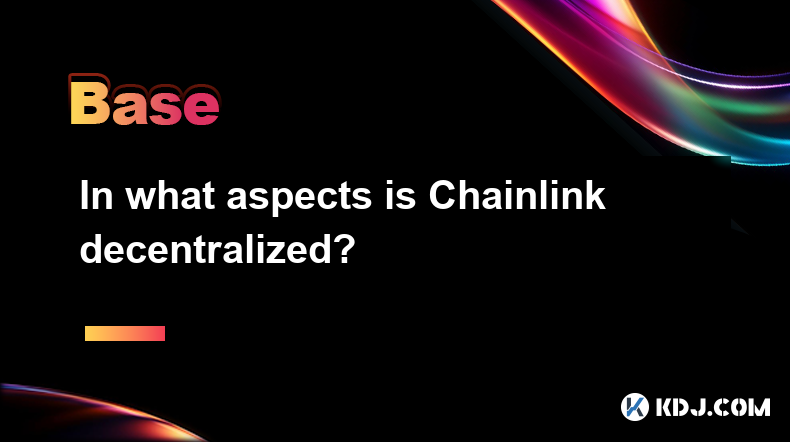
In what aspects is Chainlink decentralized?
Apr 02,2025 at 05:49pm
Chainlink is a decentralized oracle network that plays a crucial role in connecting smart contracts on blockchain networks with real-world data. Its decentralization is reflected in multiple aspects, ensuring the network's security, reliability, and integrity. This article delves into the various ways Chainlink achieves decentralization, including its n...
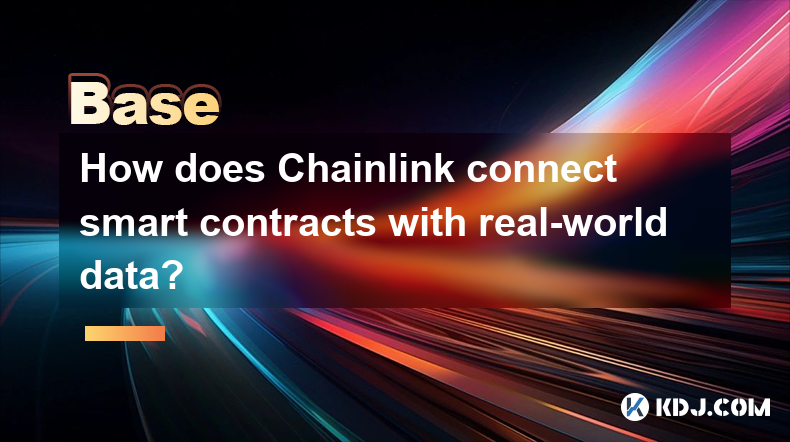
How does Chainlink connect smart contracts with real-world data?
Apr 02,2025 at 03:56pm
Chainlink is a decentralized oracle network that plays a crucial role in connecting smart contracts on blockchain platforms with real-world data. Smart contracts are self-executing contracts with the terms of the agreement directly written into code, but they can only interact with on-chain data. To access real-world data, such as stock prices, weather ...
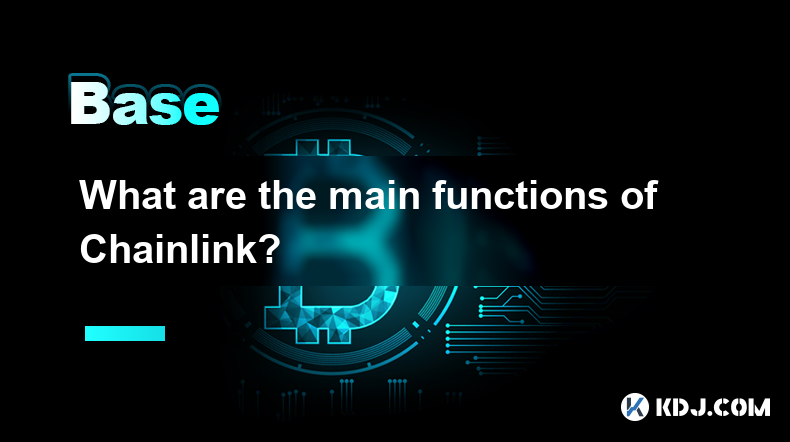
What are the main functions of Chainlink?
Apr 02,2025 at 11:49pm
Chainlink is a decentralized oracle network that plays a crucial role in connecting smart contracts with real-world data and external APIs. The primary function of Chainlink is to facilitate the seamless integration of off-chain data into on-chain smart contracts, enabling them to execute based on real-world events and information. This integration is v...

How does Chainlink work?
Apr 03,2025 at 01:50am
Chainlink is a decentralized oracle network that connects smart contracts with real-world data and external APIs. It plays a crucial role in the blockchain ecosystem by enabling smart contracts to interact with data outside their native blockchain environment. This connectivity is essential for smart contracts to execute based on real-world events and d...
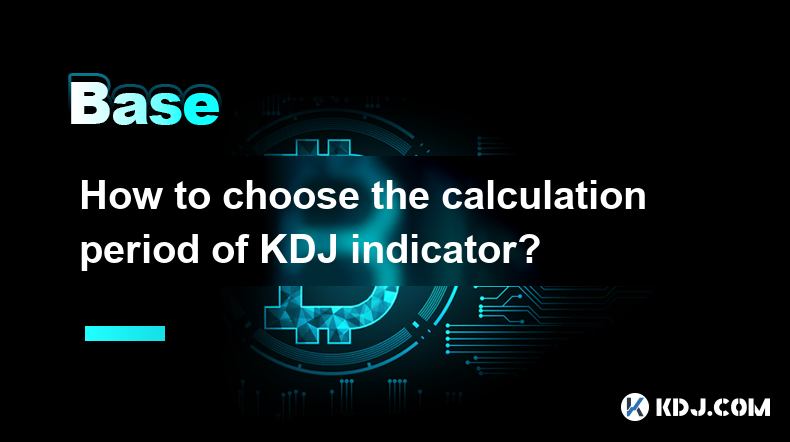
How to choose the calculation period of KDJ indicator?
Apr 02,2025 at 01:00pm
The KDJ indicator, also known as the Stochastic Oscillator, is a popular technical analysis tool used by cryptocurrency traders to identify potential buy and sell signals. The calculation period of the KDJ indicator is crucial in determining its effectiveness in predicting market trends. In this article, we will explore the factors to consider when choo...
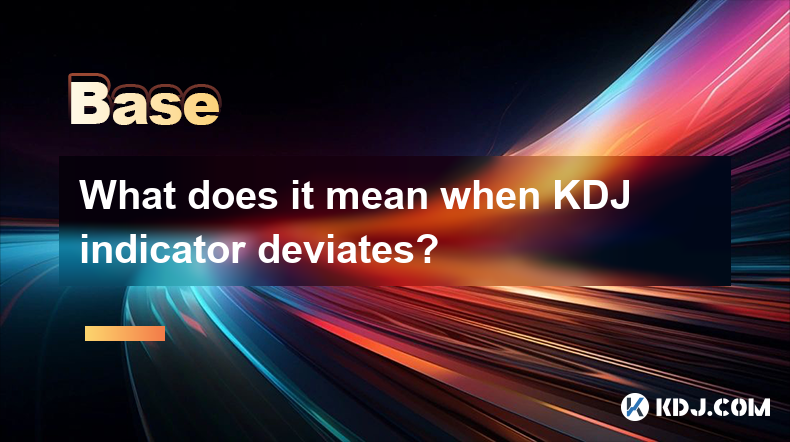
What does it mean when KDJ indicator deviates?
Apr 01,2025 at 03:08pm
The KDJ indicator, also known as the Stochastic Oscillator, is a popular technical analysis tool used in the cryptocurrency market to predict price movements. When the KDJ indicator deviates, it means that the current price of a cryptocurrency is moving away from its typical range, as indicated by the KDJ lines. This deviation can signal potential trend...

In what aspects is Chainlink decentralized?
Apr 02,2025 at 05:49pm
Chainlink is a decentralized oracle network that plays a crucial role in connecting smart contracts on blockchain networks with real-world data. Its decentralization is reflected in multiple aspects, ensuring the network's security, reliability, and integrity. This article delves into the various ways Chainlink achieves decentralization, including its n...

How does Chainlink connect smart contracts with real-world data?
Apr 02,2025 at 03:56pm
Chainlink is a decentralized oracle network that plays a crucial role in connecting smart contracts on blockchain platforms with real-world data. Smart contracts are self-executing contracts with the terms of the agreement directly written into code, but they can only interact with on-chain data. To access real-world data, such as stock prices, weather ...

What are the main functions of Chainlink?
Apr 02,2025 at 11:49pm
Chainlink is a decentralized oracle network that plays a crucial role in connecting smart contracts with real-world data and external APIs. The primary function of Chainlink is to facilitate the seamless integration of off-chain data into on-chain smart contracts, enabling them to execute based on real-world events and information. This integration is v...

How does Chainlink work?
Apr 03,2025 at 01:50am
Chainlink is a decentralized oracle network that connects smart contracts with real-world data and external APIs. It plays a crucial role in the blockchain ecosystem by enabling smart contracts to interact with data outside their native blockchain environment. This connectivity is essential for smart contracts to execute based on real-world events and d...

How to choose the calculation period of KDJ indicator?
Apr 02,2025 at 01:00pm
The KDJ indicator, also known as the Stochastic Oscillator, is a popular technical analysis tool used by cryptocurrency traders to identify potential buy and sell signals. The calculation period of the KDJ indicator is crucial in determining its effectiveness in predicting market trends. In this article, we will explore the factors to consider when choo...

What does it mean when KDJ indicator deviates?
Apr 01,2025 at 03:08pm
The KDJ indicator, also known as the Stochastic Oscillator, is a popular technical analysis tool used in the cryptocurrency market to predict price movements. When the KDJ indicator deviates, it means that the current price of a cryptocurrency is moving away from its typical range, as indicated by the KDJ lines. This deviation can signal potential trend...
See all articles
























































































